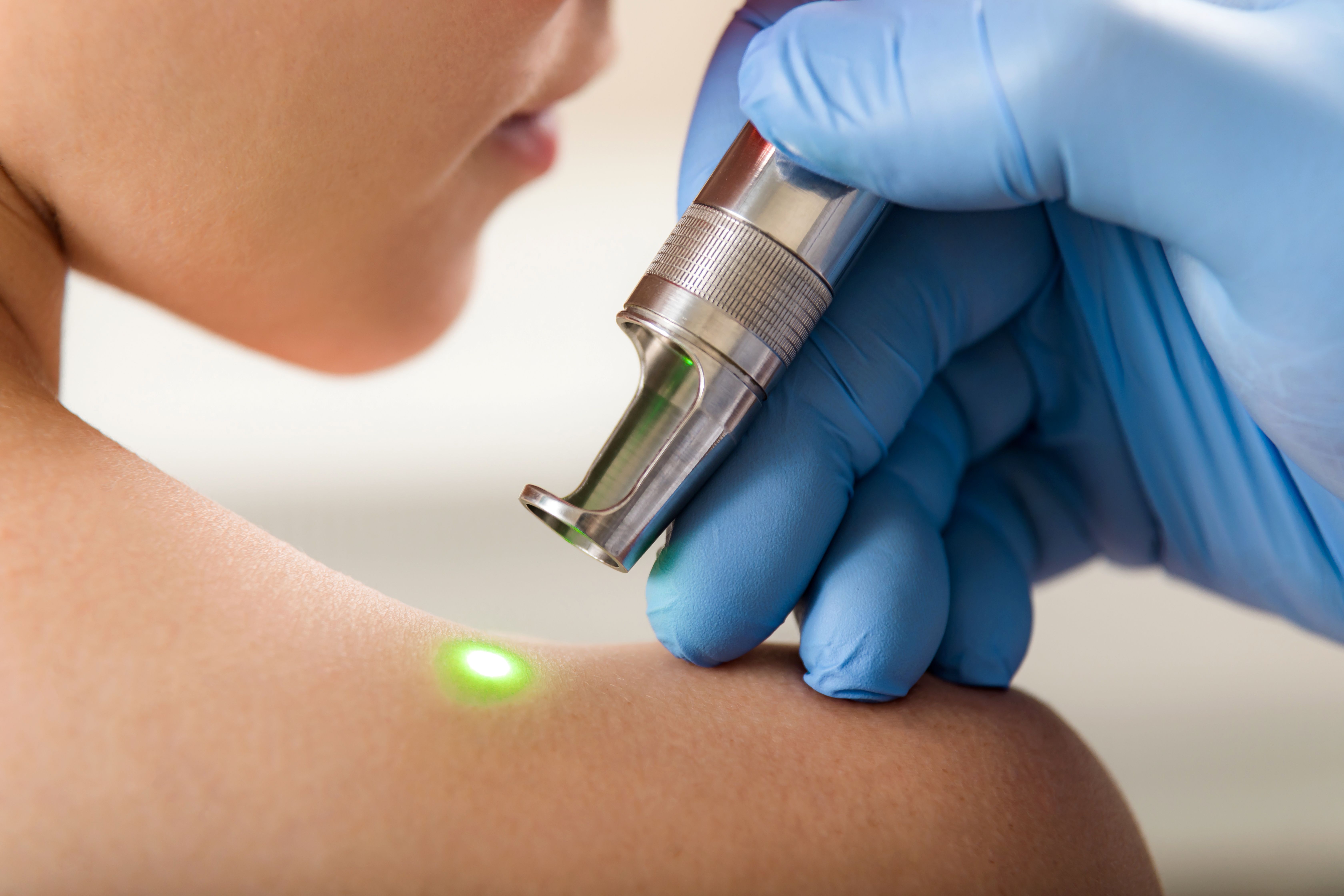- Acne
- Actinic Keratosis
- Aesthetics
- Alopecia
- Atopic Dermatitis
- Buy-and-Bill
- COVID-19
- Case-Based Roundtable
- Chronic Hand Eczema
- Drug Watch
- Eczema
- General Dermatology
- Hidradenitis Suppurativa
- Melasma
- NP and PA
- Pediatric Dermatology
- Pigmentary Disorders
- Practice Management
- Precision Medicine and Biologics
- Prurigo Nodularis
- Psoriasis
- Psoriatic Arthritis
- Rare Disease
- Rosacea
- Skin Cancer
- Vitiligo
- Wound Care
Article
Top 3 trends for tattoo removal
The options for tattoo removal are more numerous and more effective than ever. Picosecond technology, quad treatments, Perfluorodecalin, macrophage targeting, and Q-switched lasers allow people with ink regret more effective ways to return their skin to pre-tat status.
For those who regret their ink, good things are happening in tattoo removal, according to Sandy Tsao, M.D., assistant professor, Harvard Medical School, and a dermatologist at the Dermatology Laser and Cosmetic Center at Massachusetts General Hospital. Dr. Tsao addressed tattoo removal in her presentation during Maui Derm for Dermatologists 2016, in Maui, Hawaii.
Among the three top trends:
1. Picosecond technology
Picosecond technology is changing tattoo removal for the better, according to Dr. Tsao. “The picosecond technology allows for fewer treatments by breaking up the particles a little smaller for faster ink removal,” she say,
2. Single visit, multiple laser treatments
“Every time you treat a tattoo, there is some epidermal whitening. That is the endpoint that we look for as the successful treatment of a tattoo. But when the epidermal whitening is present, it actually limits us from continuing the treatment because you are adding thermal damage while only minimally continuing to break down the tattoo ink,” Dr. Tsao says. “You have to wait about 20 minutes for that epidermal whitening to go away. So, what has been done as a trend has been to wait the 20 minutes and repeat the tattoo treatment. You repeat this process four times (R20 method). You’re doing a quadruple treatment at one visit, which helps to reduce the number of overall treatment sessions that you need.”
3. Incorporating the patch
The DeScribe Perfluorodecalin (PDF) Patch (OnLight Sciences) is a technology that allows the epidermal whitening, but reduces the time it’s there. “If you place the patch over the tattoo and treat the tattoo, it minimizes the time that the epidermal whitening is present, allowing you to repeat the treatment immediately. Which means the patient’s visit is only extended by five or 10 minutes,” she says
Current Truths, Future Trends
In the future, dermatologists might need only apply a cream to remove tattoos. According to Dr. Tsao, a Ph.D. student at Dalhousie University has developed a tattoo removal cream that recruits new macrophages to engulf the tattoo pigment-laden macrophages in the skin and carry them away to the lymph nodes. There are no clinical studies available to date, but the possibility is intriguing, she says.
For now, tattoo-removing dermatologists should remember some basic truths.
Several wavelengths of laser light are used for tattoo removal, ranging from visible light to near-infrared light. Nonprofessional tattoos and black ink tend to be the easiest to remove, and you can basically use almost any Q-switched laser to remove these tattoo pigments, according to Dr. Tsao.
“Those tattoos respond beautifully. The Q-switched 1064 nm Nd: YAG laser and the Q-switched 694nm ruby laser tend to be excellent choices for the removal of black and dark tattoo pigment. The Q-switched ruby laser is also highly absorbed by melanin, increasing the risk of hyperpigmentation. The Q switched 1064nm Nd:YAG laser is less absorbed by melanin and is, therefore, safest for patients with darker skin phototypes,” she says. “We’re really fortunate now to have the picosecond lasers that tend to reduce the number of treatments that are necessary. These were initially Q-switched YAG lasers, but other wavelength picosecond devices are now available, as well.”
As for colors. Red tends to be most effectively removed with the Q-switched Nd: YAG 532nm. The most difficult colors to remove with lasers are whites, pinks, blues, yellows and purples.
The laser to choose for colors? Multi-color tattoo removal almost always requires the use of two or more wavelengths of light for the best treatment response she says.
Disclosure: Dr. Tsao reports no relevant disclosures.
Newsletter
Like what you’re reading? Subscribe to Dermatology Times for weekly updates on therapies, innovations, and real-world practice tips.













